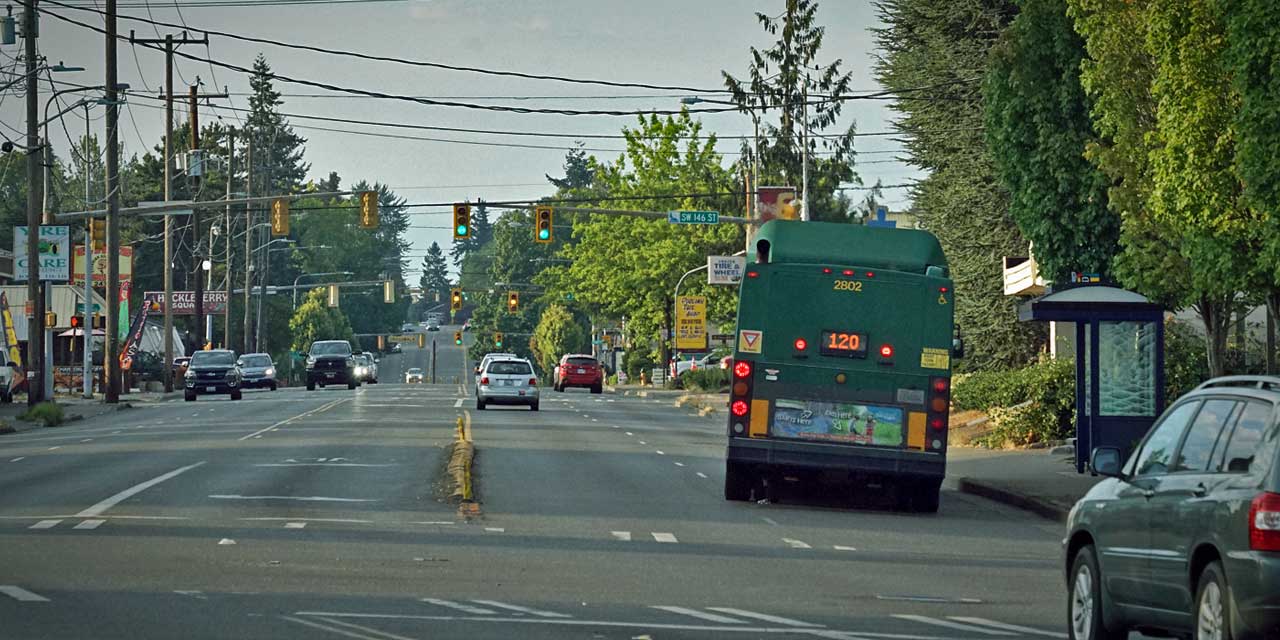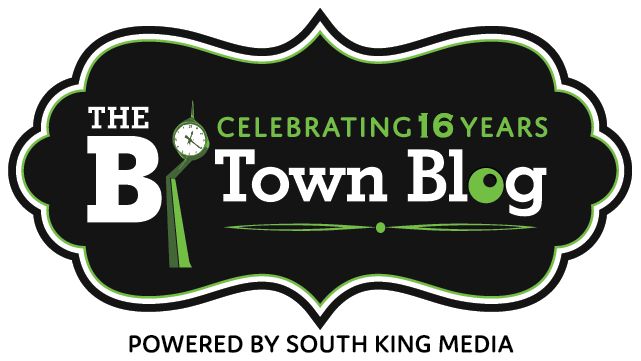
By Jack Mayne
In March, the Burien City Council was told of plans by Metro Transit to change the right of way for Ambaum Boulevard for the proposed RapidRide H-Line bus rapid transit, and city residents at Monday’s study session heard an overview of the plan and some criticism from city residents.
Since the project is in the preliminary design phase, no cost estimates have been made, but it assuredly will be in the millions of dollars. The city says there has been “additional public outreach in Burien with a focus on the alternatives for Ambaum Boulevard.†The change to traffic flows on parts of Ambaum including sidewalks and lane changes were estimated by Metro in minutes gained or lost, a fact that some residents complained that the cost might outweigh the benefits.
Summary of outreach
City Engineer Maiya Andrews said at the Monday (April 23) meeting that “we do not have a recommended alternative tonight, we plan to come back to you in May with a recommended alternative” to changes for the boulevard to accommodate the new rapid transit H Line.†Currently,
Andrews said there are 19,000 vehicle trips on Ambaum and 9,200 bus riders on the Ambaum route; “that’s a huge amount of bus riders, and we expect that to only increase,” said Andrews, adding that when Metro has converted other lines, “we’ve seen anywhere from 12 percent on the low end to as much as 50 percent increase when they converted a traditional line to a bus rapid transit line because the speed reliability is that much better and people are more comfortable using those types of systems”.
Andrews said the growing senior population relies more on bus systems and car ownership is declining amongst millennials and a general cutting back on car ownership. Parking, Andrews said, “in Seattle is getting less and cost of parking is Seattle is getting more.”
She added the Highway SR 509 connection is “less attractive” because of other changes.
“We can’t just discount the bus riders on this route,” she said. “If all those people were in cars, Ambaum wouldn’t function well today.”
She said that Metro Route 120 “is among he heavier used routes in Metro’s system.” The sidewalks along parts of Ambaum “don’t meet the needs of our ADA users,” she added, referring to the federal Americans with Disabilities Act, noting that in places pedestrians are on narrow walkways near high speed traffic. Some of the poor sidewalks are in areas that would be a four lane section.
Ambaum “uncomfortable”
“Walking on Ambaum is generally uncomfortable,” Andrews told the Council, adding there is constant lane changing to more faster in middle lanes, but moving to curb lanes to make turns.
“Most of the people are in the left lane, using that as their access.”
The four lane areas of Ambaum is where the city sees problems and a potential change could be three-lanes, one each way and a center turn lane, which Andrews said could accommodate wider sidewalks, possible even with planters, but that is “really expensive and I don’t see us doing that in the next 10 years.”
Working with Metro could mean a sharing of the costs of improvements of current problems with sidewalks. Andrews said proposed three lane areas of the “new” Ambaum would be very short areas with no bus stops and no left turns and that most of the street would be five lanes to accommodate bus stops and smooth traffic flow. The narrower street area would make it easier for pedestrians to cross. The impact on cars is not as big as it might be perceived, because the areas are few and small, “but there is an impact and I do not deny that there will be delays. The 70 percent of 2.5 mile corridor under consideration is five lanes today will remain five lanes under the proposed changes, she said. As for pedestrian crossing, Andrews said “we have some pretty rough pedestrian crossings on Ambaum today that are not well marked and don’t provide pedestrians a lot of security“ with some people scurrying across at several locations. Four existing locations would be protected by a new signal or a new pedestrian activated signal. There also would be new crossings, with the crossing at 136th being one of them proposed by Metro, along with wider and better sidewalks in several areas. The plan has a new signal at SW 150th where it is proposed the buses would turn left to get to the Transit Center and getting them out of the 148th left turn cars area, Andrews said. The Metro plan would also provide a new lede turn lane from westbound 116th Street and a second south bound left turn lane at 128th.
Changes proposed
Andrews introduced Jerry Roberson, Metro program manager on the Ambaum project which is planned and with whom the city is working on modifications that “combines alternatives that give us more benefits for all three users, pedestrians, bus riders and vehicles. I can say that none of them (changes) will make one user completely happy,” Andrews said, adding the city needs time to work with traffic modeler the city has hired to work on possible changes in the Metro plan.
Roberson said the Metro changes to an H line would cut travel time from the West Seattle Bridge, down Delridge Way to Ambaum and into Burien center by 13 percent or 4.82 minutes. Going north, the time savings are estimated at 4.02 minutes or 11 percent savings. The Metro analysis presented by Roberson showed changes is time with and without the changes in the area of a minute, plus or minus. Roberson said the value of the changes is up to the Burien City Council to decide if the project is of value. Andrews noted that there are not delays with traffic bunching together like other arterials. The Ambaum traffic is more spread out and the gains on traffic flow are less than perhaps on other arterials.
Traffic times questioned
Residents suggested the small time savings were not worth “wasting the money on. If you are saving a minute, two minutes, I’ve driven on Ambaum both ways – every single day, five days a week since 1996 – and fix those traffic lights,” said Eric Stauffeld, a Burien resident, noting that many times he stops for a traffic light as there is no traffic.
“Look, start off with the easy things, don’t waste our dollars. Work on the lights. If you pick up a whole lot of time that way you may not have to do anything else.”
A woman said the Council thought it was fixing a problem, “but you are creating a problem.” She said she took the city survey and responded to all the questions, but the questionnaire is skewed. She also said there is not a big issue with traffic on the street and “there is not a problem.”
Other residents at the meeting questioned the small traffic time savings compared with the added pollution from buses affecting the drivers following. A Boulevard Park resident said Metro fails if it doesn’t get people out of cars and “I think we will be just fine if we dedicate one lane in both directions to Metro.”
Some suggested that Metro’s proposed small time changes did not work out on other streets, one person suggesting much longer delays, up to an hour a day, on Roxbury after changes were made.
Another resident said the “similar changes” for buses on Roxbury and 35th Avenue SW in West Seattle meant large increases in commute times, not the small ones Metro suggests for Ambaum when bus changes are made. He also said that bus drivers push in front of cars, forcing cars to wait for the bus to move out in front of them.
City Engineer Andrews said 35th SW is a Seattle problem, not a Burien problem, adding the problem with 35th was traffic was too fast and needed to be slowed because of the number of accidents. Andrews said the changes improved slowing and cutting accidents. She also said cars go around buses and did not create backups.






